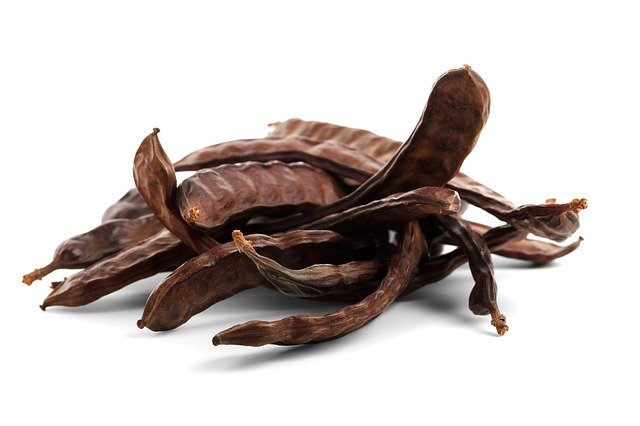
Carob is often used as an adjuvant in weight loss diets, an aid in case of intestinal disorders and as a substitute for cocoa.
The carob tree is the fruit of the Carob tree (Ceratonia siliqua), a tree belonging to the Caesalpiniaceae family, widespread in the Mediterranean region.
Properties and benefits of carob tree
The fruits of the carob tree are an astringent food, useful in case of mild diarrhea, especially for babies and children.
The pulp of the carob is practically fat-free but rich in fiber, therefore satiating. For this reason it is used in low-calorie diets as a slimming, to facilitate weight loss in overweight and obese people.
The carob seeds, once deprived of the integument and embirone, are ground to obtain carob flour or carob gum.
Carob flour can be dissolved in hot water and, after cooling, gives rise to viscous solutions. For this reason it is used in the food, pharmaceutical and cosmetic industries as a thickener and gelling agent, also together with other substances with similar properties, such as carrageenans and guar gum.
Carob flour is therefore able to absorb large amounts of water, which is why it is used in diets and as an antidiarrheal
The pulp of the carob tree, moreover, once roasted and ground is used as a substitute for cocoa and coffee to prepare sweets and diet drinks and caffeine-free.
Carob does not contain gluten so it can also be consumed by those suffering from celiac disease.
How to use
The used parts of the carob tree are the seeds contained in the pods and the flour obtained from them
The fruits of the carob tree can also be dried and ground to obtain a useful powder against high cholesterol and to regulate the level of sugar in the blood.
Carob gum has a beneficial action in the treatment of gastroesophageal reflux, stomach acid and diarrhea.
Contraindications of carob tree
Carob has no contraindications to normal doses of use.
Description of Carrubbe
The carob trees are the fruit of the carob Ceratonia siliqua, a spontaneous evergreen tree typical of the whole Mediterranean region, belonging to the Ceesalpinaceae family.
The carob tree has pinnate-compound leaves consisting of a variable number of leaflets, generally from four to ten. The flowers are greenish, gathered in clusters, while the fruits are medium-large, hanging and leathery pods. Each pod contains about fifteen flattened seeds.
Habitat of the Carrubbe
The Carob tree is a plant native to the southern basin of the Mediterranean.
The northernmost specimens are found on the Argentario promontory (Tuscany).
Background

- Historically, locust beans were associated with the figure of St. John the Baptist, who is believed to have consumed them in the desert.
- The word carob, in Arabic, means “carat”, probably because it was believed that the carobs always had the same weight (1 fifth of a gram) and therefore it was possible to use them to weigh gold and precious stones.






